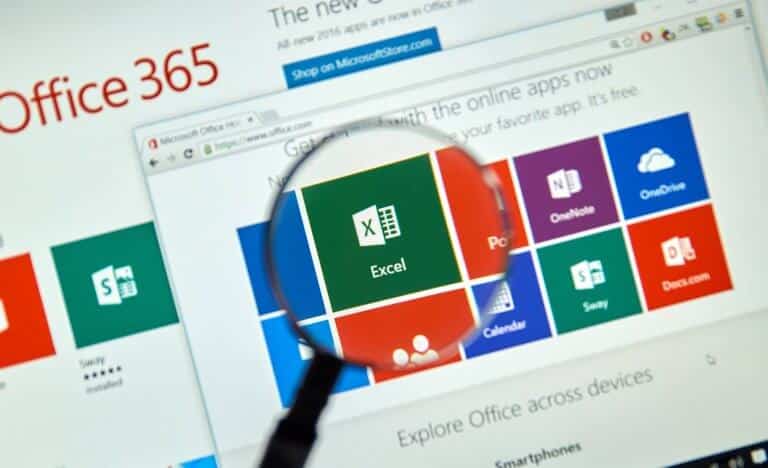Behind every organization, there are teams that install, maintain and repair equipment on site, and manage people and processes in order to accomplish the tasks. This work requires a huge logistical challenge, and it could be hard to assess when you don’t have access to all necessary data and when you are not using the correct Key Performance Indicators (KPIs).
Which metrics do you need to evaluate field services? How should you use them? In this article, we want to show you some solutions to this issue and share with you few practices for the optimal use of technology and metrics that could useful to improve your team performance.
Easy access to information
For those in charge of field services is not always easy to get the information they need. To have a better perspective of the business, the quick and easy access to data is essential, since this allows an effective monitoring and evaluation. With the right reports, metrics and dashboards, you can start to visualize what is happening in the field services department, in real time.
8 metrics to assess the effectiveness of field services
Which metrics are used by the best field service divisions to measure their performance, increase efficiency, and retain customers? The KPIs used by different companies and sectors are, to a certain extent, universal, despite some small differences. These metrics are associated with key business metrics such as revenue, cost, productivity, and customer satisfaction. Here we will examine the metrics that help you to improve field service management and how you can use them to achieve effective results.
First time resolution coefficient (FTF)
The percentage of times the customer’s problem is solved on the first visit.
It is one of the most important metrics to increase profitability, productivity and customer satisfaction. A low FTF level can negatively affect customer loyalty, retention and repeat purchase rates, and reduce customer recommendations.
How can you improve first time resolution coefficients?
-Optimizing the process and being able to send a solution quickly.
-Offering a smarter, faster and faster service.
-Increasing inventory visibility through easy access to own stock and parts ordering via mobile devices.
With the necessary tools to solve problems at first glance, your technicians’ work will be more efficient and faster, increasing service revenue and avoiding repeat visits that could be quite expensive for your company.
Mean Time to Repair (MTTR)
Average time to repair a product at the customer’s premises.
Another essential productivity metric is Mean Time to Repair (MTTR), which measures the average time required to complete a repair. You can also use Mean Time to Service (MTTS) and Mean Time to Installation (MTTI), according to the type of service provided by your company. Mean Time to Repair is especially important when repairing tasks are broken down by product line or by type of service (preventive maintenance, installation, etc.) since it allows understanding aspects such as incorporation of new members and the maintenance requirements in order to adapt to the standard service delivery times of the SLA (Service Level Agreement).
How can you improve mean time to repair?
-Providing mobile resources for problem solving and encouraging the dissemination of knowledge within the team.
-Improving communication and facilitating mobile collaboration between technicians.
-Using the stored information to get a genuine understanding of the machines and their technical specifications.
Ascription coefficient
Percentage of installed base covered by a contract or warranty.
The main objective of the service divisions is income growth and to achieve that is necessary to have the largest possible number of clients with a service contract or an extended warranty. The enrollment coefficient is a relevant metric that help to monitor service teams.
How can you improved ascription coefficients?
-Encouraging cross-sell and directed (cross-sell and up-sell) and increasing sales contracts.
-Monitoring the sale of service and using the ascription coefficients to establish a baseline and measure any progress.
-Giving technicians the mobile tools required to carry out their tasks efficiently. Field technicians can also make new sales, as they know customers’ shortcomings and aspirations.
Uptime-guarantee
Percentage of uptime covered by contract in relation to a product installed.
Machine uptime is a key element in most service level agreements (SLAs), and is usually closely monitored due to the impact it can have on costs and on customer satisfaction. When any equipment fails, it can interrupt customer activity, putting users’ health at risk or causing economic problems. A proven history of constant uptime can increase customer loyalty and improve brand reputation.
How can you improve the average activity time guaranteed by contract?
-Collect information about the machines and deliver it to the product development team as part of a continuous feedback loop.
-Schedule equipment maintenance at periodic intervals to reduce unplanned downtime and other risks.
-Deliver straight away urgent work orders to technicians to reduce downtime.
Average time to settle
The average time to resolve a problem.
It refers to the time it takes to solve a customer’s problem, starting from the moment the company was notified. This metric allows the identification of certain external processes that may hinder the resolution to the problem. By reducing this time, you can offer a better user’s experience to your clients and can control problem resolution costs
How can you improve average time to settle?
-Optimizing technician programs and workshops to enable a faster and more efficient service.
-Providing full offline mobile functionality to increase your technical team productivity.
-Reducing deadlines for customer complains resolution through remote monitoring.
Average response time
The time it takes, on average, to solve the life cycle of a problem.
It is necessary to maintain an effective control of the average response time in order to comply with the SLAs and to achieve that you need to monitor tour team performance and each worker achievements. This metric will show you which areas need to be improved and which worker need further training.
How can you improve the average response time?
-Employing mobile GPS technology to know exactly field technicians location in other to improve the work schedule.
-Informing technicians about new work orders through their mobile devices.
-Providing navigation instructions through a “hands-free” system and providing contact information, so technicians can get to the workplace easily and immediately.
Utilization
Breakdown of the work carried out by each technician (productive time versus total work hours).
There are various methods of measuring utilization, but maintaining a homogeneous approach throughout the organization is essential. The differences in formulas generally vary depending on the hours available. For some, the total hours available is defined as a standard year of work (in the US, for example, 2,080 hours). For others, the total hours available represents a net total of 2,080 hours. Utilization is defined as the amount of an employee’s available time that’s used for productive, billable work, expressed as a percentage.
This metric objectiveis that technicians do as much as possible during their working day.
By looking at employee utilization rates by department or by job function, you can see where demand is heaviest. It also helps to identify opportunities to grow and where and when you may want to consider adding staff.
How can you improved utilization?
-Optimizing technicians programs and journeys so that they can deliver a more efficient and faster service.-
-Allowing technicians to communicate with each other so that they can handle, without wasting time, any extra work that may arise.
-Providing offline mobile functionality so technicians have offline coverage and increase their productivity.
Repeat visits
It measures the number of times that a technician must carry out maintenance on an installed product in a certain timeframe.
The analysis of this metric highlight certain products that require a large number of visits within a timeframe and this information is very relevant for the teams developing new products and for that have to optimize those already created. It also offers the possibility of selling additional maintenance services. This metric also allows measuring and analyzing the efficiency of each technician, information that is important to see if they have adequate training. It can also show us which technicians are more competent in resolving problems and how you can take advantage of the most efficient workers. This information is also important for customers who want to see how often certain products need maintenance, in order to extend the warranty or even to replace old equipment if is necessary.
How can you improve repeat visits?
– Providing technicians all the stored information through an offline mobile connection so that they can know exactly which products need maintenance.
-Performing remote monitoring, software and content management to carry out FTP transfers or firmware update of a specific product line in order to solve problems in a fast manner.
-Offering training programs to your technicians so that they can carry out the required maintenance effectively.
These eight metrics are essential to manage your field services division and to get a clearer overview of your business. These KPIs are an excellent starting point for evaluating the performance of your field division.

DataScope is a platform which allows various industries to streamline, organize and evaluate the work of their field staffs thanks to online forms which provide real time indicators 100% adaptable to any field.






